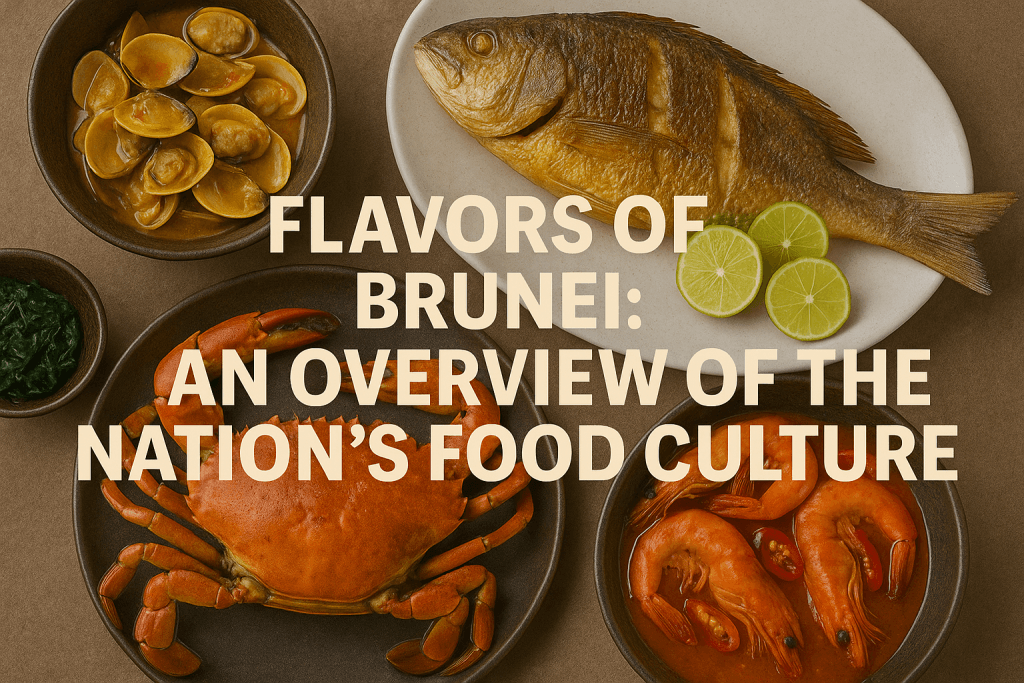Flavors of Brunei: An Overview of the Nation’s Food Culture provides a detailed examination of how Bruneian cuisine has developed into a diverse and culturally rich expression of national identity.
The cuisine integrates regional practices, local ingredients, and spiritual values that reflect the country’s Malay Islamic Monarchy foundation. Brunei’s food heritage reflects centuries of influences from Malaysia, Indonesia, China, and India.
The focus on freshness, simplicity, and community-based preparation defines Brunei‘s approach to food. Local dishes highlight native spices, halal meat, and seafood from Brunei Bay. Brunei’s culinary culture prioritizes authenticity through the preservation of indigenous recipes and traditional cooking techniques.
Rice as the Foundation of Meals
Flavors of Brunei: An Overview of the Nation’s Food Culture highlights the central role of rice in Brunei’s dietary structure. Steamed white rice, or nasi putih, forms the base of almost every meal. It is paired with proteins, sambal, vegetables, and soups to create balanced plates that reflect the national palate.
See more:
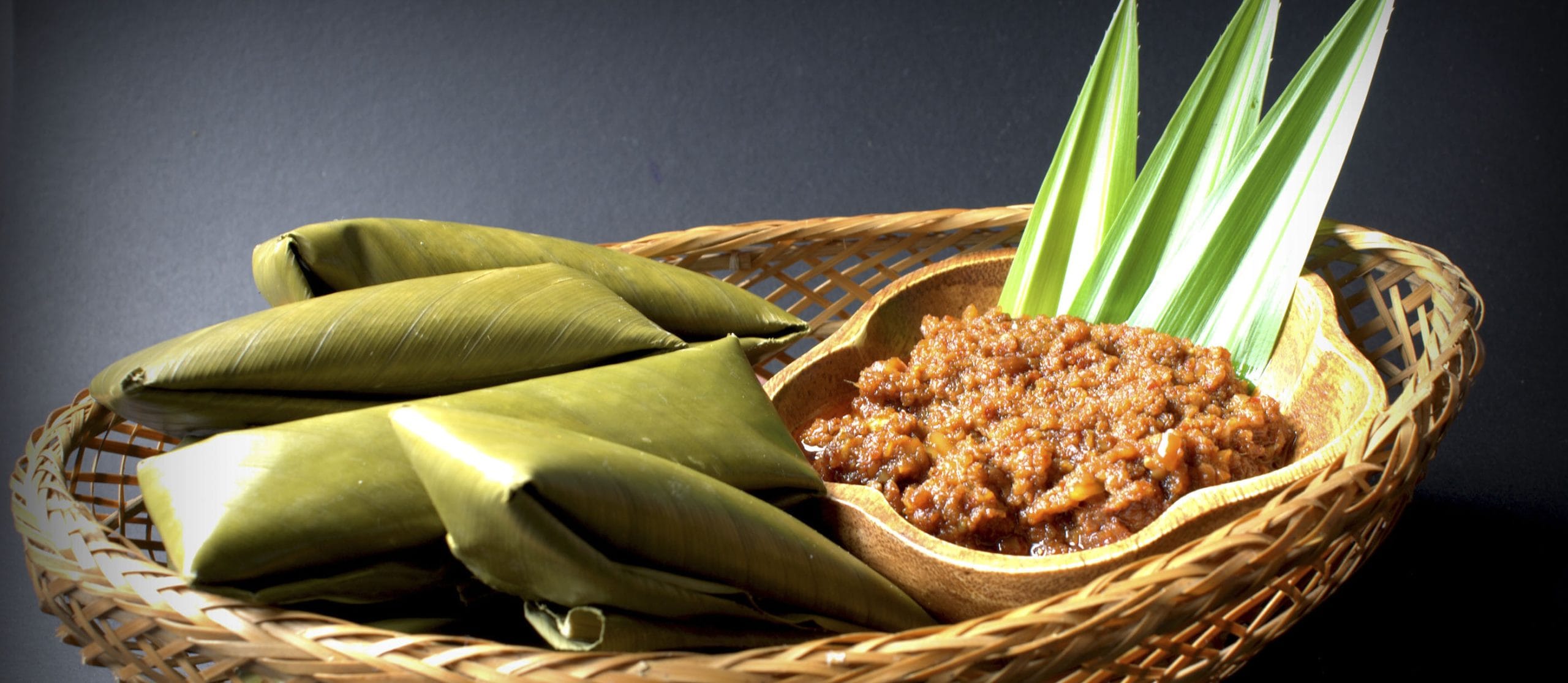
Rice symbolizes nourishment, respect, and family bonding across generations. Whether featured in nasi lemak, nasi katok, or glutinous rice desserts, it maintains a permanent presence in Bruneian cuisine. Rice dishes offer insight into Brunei’s respect for agricultural traditions and the adaptability of grain-based meals.
Signature Dishes of Brunei
Flavors of Brunei: An Overview of the Nation’s Food Culture includes iconic dishes that form the core of everyday meals and ceremonial feasts. Nasi katok, ambuyat, and rendang are some of the most recognizable recipes that define Brunei’s culinary landscape. Nasi katok features steamed rice with crispy fried chicken and spicy sambal.
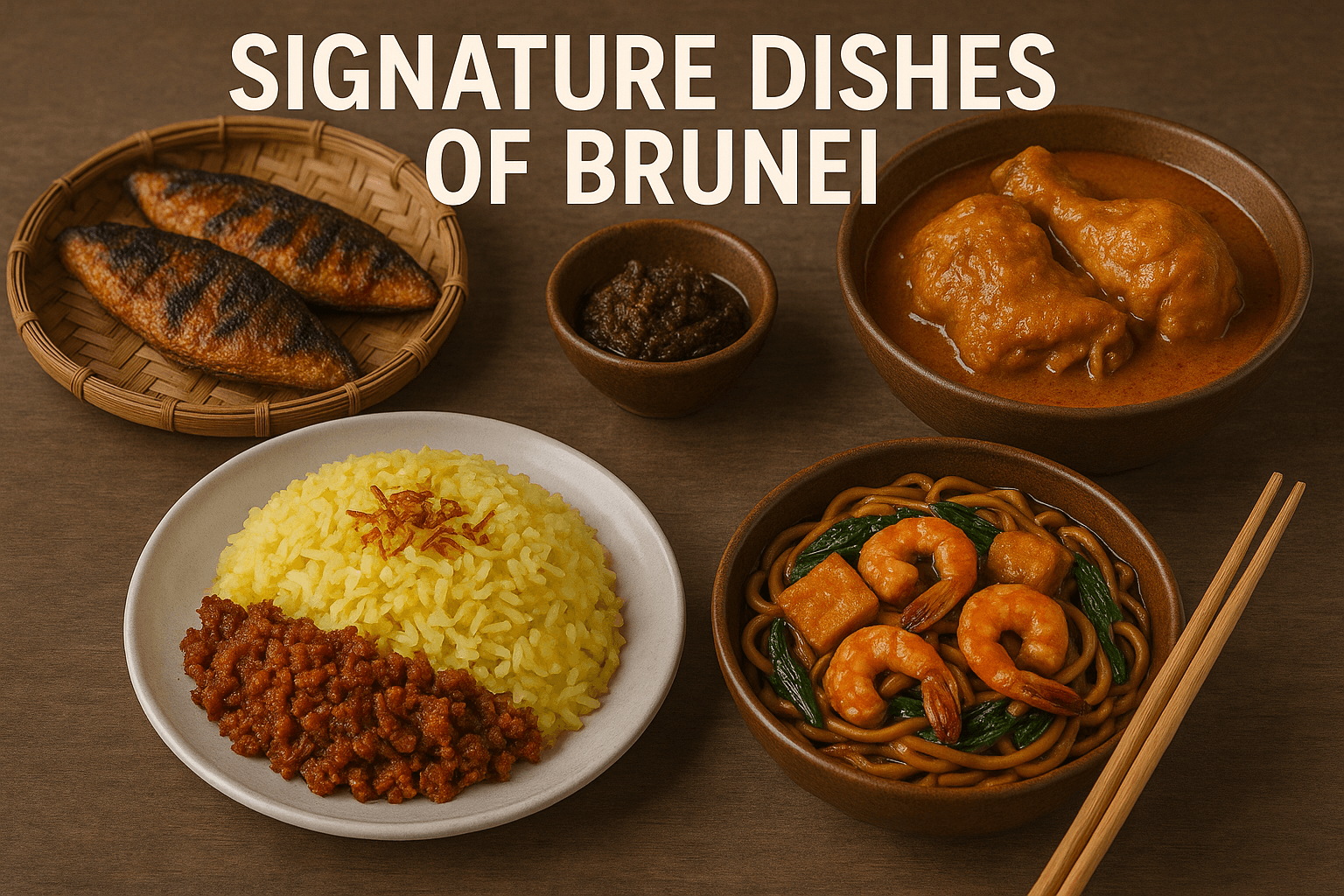
Ambuyat, a sago starch dish with a gelatinous texture, is dipped into tangy sauces and eaten using traditional bamboo sticks. Rendang, a slow-cooked meat dish rich in coconut milk and spices, demonstrates Brunei’s love for depth and layered flavor. These dishes are accessible yet reflective of deeper cultural values.
Importance of Ambuyat in National Identity
Among the unique dishes explored in Flavors of Brunei: An Overview of the Nation’s Food Culture, ambuyat stands out for its traditional and communal significance. It represents the nation’s indigenous culinary heritage and the use of sago as a staple in interior regions. Ambuyat requires skill to prepare and is usually enjoyed with family and guests.
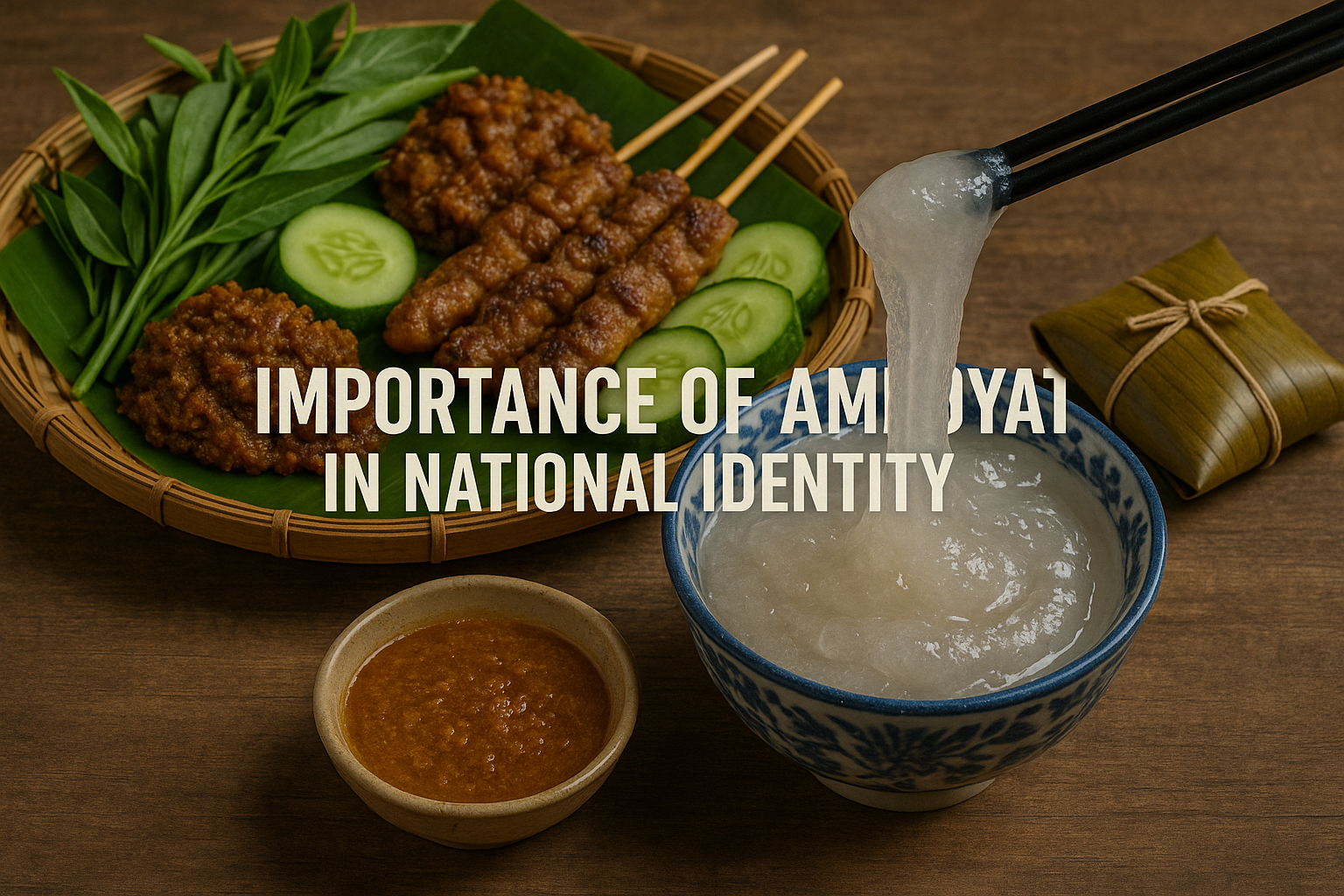
Accompanying sauces like sambal binjai, fermented durian paste, and chili condiments highlight the variety in Brunei’s taste profiles. The shared experience of eating ambuyat fosters unity, reinforcing how food reflects collective identity and ancestral practices in Brunei.
Bruneian Street Food and Snacks
Flavors of Brunei: An Overview of the Nation’s Food Culture also encompasses popular street food culture, which thrives in night markets and roadside stalls. Pulut panggang, curry puffs, and kuih cincin are common snacks made from sticky rice, pastry, and palm sugar. These snacks are affordable and widely consumed across all demographics.
Street food in Brunei mirrors traditional home-cooked meals, with vendors often preparing dishes based on family recipes. These local snacks form part of the daily routine and are served during tea time, festive seasons, and special gatherings. Brunei’s snack culture displays culinary ingenuity with minimal ingredients.
The Role of Sambal in Every Meal
Sambal is a defining feature in Flavors of Brunei: An Overview of the Nation’s Food Culture. This spicy condiment, made from chilies, garlic, shallots, and shrimp paste, enhances everything from rice dishes to seafood. Sambal adds complexity and character to otherwise simple plates.
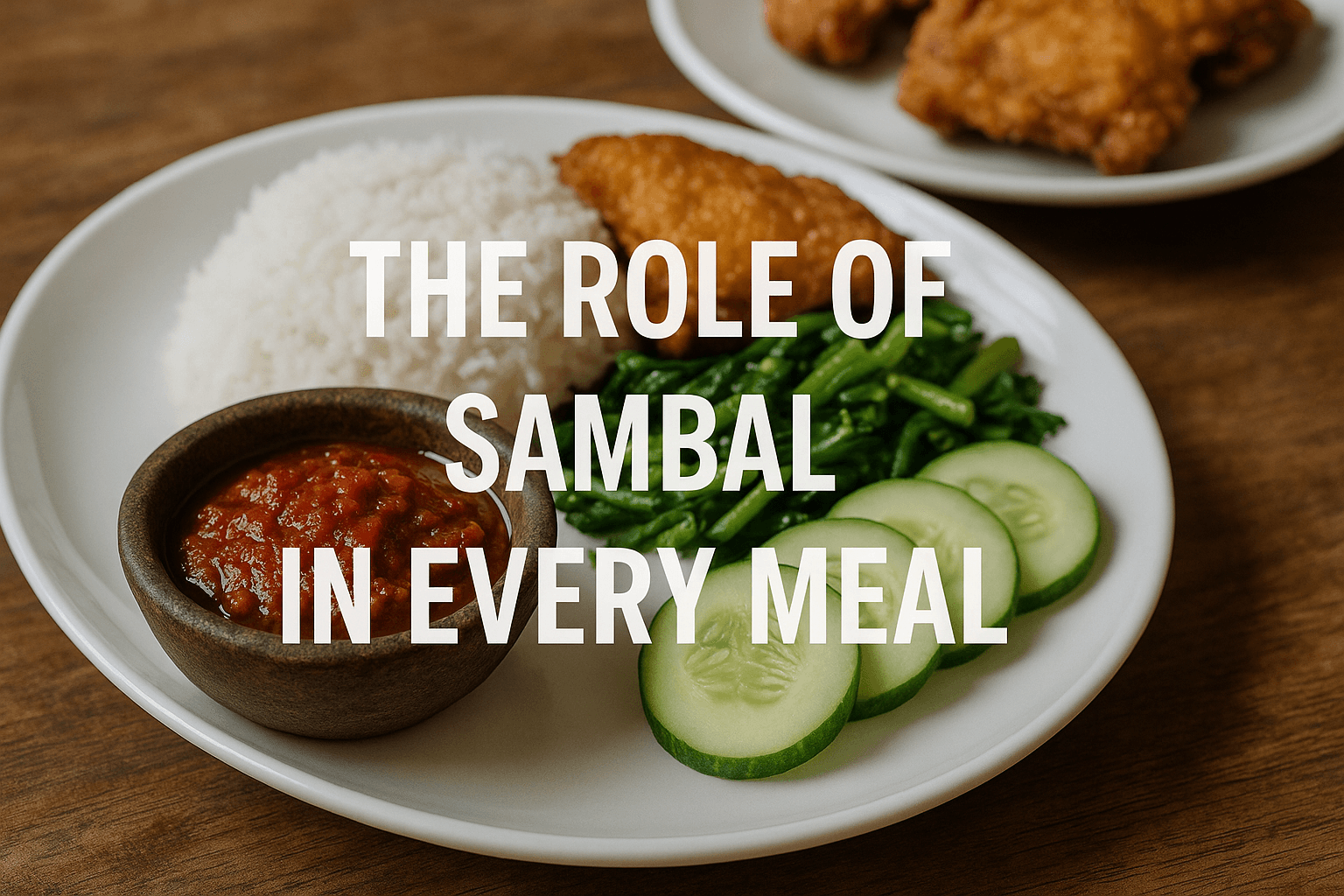
Each family or vendor has a unique sambal recipe, contributing to regional culinary variations. Some sambals include fermented ingredients, while others highlight citrus or dried fish. Brunei’s sambal culture showcases the nation’s skill in balancing heat, umami, and fragrance.
Cultural Influences Shaping Brunei’s Cuisine
Flavors of Brunei: An Overview of the Nation’s Food Culture explores how Brunei’s strategic position in Southeast Asia allowed external culinary influences to take root. Malay cuisine forms the base, while Chinese noodles, Indian curries, and Middle Eastern spices have been adopted and localized over time.
Dishes such as mee goreng, roti canai, and chicken curry are widely available, adapted to suit local halal standards and flavor expectations. Cultural fusion has contributed to Brunei’s diverse food offerings, creating a multilayered cuisine without diluting its national identity.
Seafood and Coastal Ingredients
Due to its coastal geography, Flavors of Brunei: An Overview of the Nation’s Food Culture emphasizes the use of seafood in daily meals. Dishes like ikan bakar (grilled fish), udang lemak (shrimp in coconut milk), and sotong sambal (spicy squid) showcase Brunei’s ability to maximize local resources.
Seafood is typically seasoned with turmeric, lemongrass, and lime to enhance freshness. Cooking techniques include grilling, steaming, and frying, preserving the natural taste of the sea. Brunei’s proximity to rivers and the ocean guarantees a sustainable and diverse seafood supply.
Traditional Cooking Techniques
Traditional methods are essential in understanding Flavors of Brunei: An Overview of the Nation’s Food Culture. Cooking techniques such as slow simmering, steaming in banana leaves, and using open-fire grills bring out natural flavors. Mortars and pestles are used to pound spices, preserving their essential oils.
Clay pots and bamboo steamers are preferred over metal cookware for their ability to retain flavor. Preservation methods like fermenting and curing allow seasonal ingredients to be used year-round. These time-honored techniques ensure the authenticity of Brunei’s culinary creations.
Halal Practices and Food Ethics
Islamic dietary laws are deeply embedded in Flavors of Brunei: An Overview of the Nation’s Food Culture. All food in Brunei follows halal guidelines, affecting ingredient sourcing, preparation methods, and restaurant operations. Pork and alcohol are prohibited, and halal certification is mandatory for public food outlets.
Brunei’s food ethics emphasize cleanliness, humane slaughter, and the responsible use of ingredients. These practices contribute to public health and cultural integrity, reinforcing how food serves spiritual as well as physical needs. Halal practices are inseparable from Brunei’s culinary ethos.
Bruneian Desserts and Sweet Traditions
Flavors of Brunei: An Overview of the Nation’s Food Culture also features a rich selection of desserts. Wajid, kuih tapai, and cendol are made using coconut milk, sticky rice, palm sugar, and fermented grains. These sweets often accompany religious festivals and family celebrations.
Tapai, a fermented rice dessert, offers a combination of sweet and tangy flavors. Cendol is a cold dessert drink with pandan jelly and coconut cream, ideal for Brunei’s tropical climate. Brunei’s dessert culture reflects its agricultural resources and community-based sharing practices.
Beverages that Define the Nation
Bruneian drinks are not only refreshments but also carry cultural meaning. Teh tarik, bandung, and ginger tea are widely consumed. Teh tarik, known for its frothy surface, is a symbol of hospitality. Bandung, a rose-syrup milk drink, is served during festive seasons.
Local herbal teas made from pandan, lemongrass, or tongkat ali support Brunei’s traditional health practices. Beverages in Flavors of Brunei: An Overview of the Nation’s Food Culture connect with the climate, community, and religious events, complementing meals and enhancing food rituals.
Regional Variations Across Brunei
Flavors of Brunei: An Overview of the Nation’s Food Culture varies across the districts of Brunei Muara, Tutong, Belait, and Temburong. Coastal districts emphasize seafood and Malay dishes, while interior regions focus on forest-sourced ingredients, river fish, and preserved roots.
The Iban and Dusun communities contribute indigenous dishes to Brunei’s culinary mosaic. Each region maintains distinctive cooking preferences while adhering to national dietary norms. Regional cuisines enrich the overall food identity of Brunei with subtle differences in spices, preparation, and presentation.
Brunei Cuisine in a Modern World
Modern dining habits have introduced fast food, processed snacks, and imported goods to Brunei. Flavors of Brunei: An Overview of the Nation’s Food Culture, however, remains firmly rooted in tradition. Many families continue to cook at home using native ingredients and time-tested recipes.
Restaurants now blend local dishes with global trends, creating innovative meals like nasi katok wraps or sambal pasta. Culinary schools and food influencers promote traditional dishes on social media. The fusion of old and new keeps Bruneian cuisine alive while attracting younger generations.
Role of Food in Religious and Social Life
Food plays an integral role in Islamic holidays, weddings, and family gatherings. Flavors of Brunei: An Overview of the Nation’s Food Culture explores how dishes like ketupat, satay, and rendang are central to events like Hari Raya. These dishes are shared among family, neighbors, and the wider community.
Food-sharing reflects generosity, hospitality, and cultural respect. Religious observances often include large communal meals that reinforce social cohesion. In Brunei, food transcends mere sustenance, acting as a medium for spiritual connection and cultural continuity.
Community, Family, and Shared Meals
Eating together is part of daily life in Brunei. Flavors of Brunei: An Overview of the Nation’s Food Culture highlights how family meals and neighborhood feasts encourage communication and bonding. Meals are served buffet-style or on shared platters, emphasizing equality and inclusion.
Hospitality is a core value in Brunei’s culinary tradition. Visitors are always offered food, often with ceremonial greetings. Communal eating not only nourishes the body but also strengthens interpersonal relationships and reinforces shared cultural values.
Education and Preservation of Culinary Heritage
Efforts are ongoing to preserve traditional Bruneian recipes. Flavors of Brunei: An Overview of the Nation’s Food Culture recognizes culinary programs in schools, cultural festivals, and digital archives as essential to this mission. Cookbooks, oral histories, and online cooking videos document generational knowledge.
The Brunei Arts and Handicrafts Centre, along with cultural NGOs, sponsors cooking competitions and exhibitions. These initiatives foster pride in national dishes and ensure that food traditions are passed down to future generations.
Sustainability and Local Sourcing
Environmental concerns are influencing modern culinary practices in Brunei. Flavors of Brunei: An Overview of the Nation’s Food Culture includes sustainable agriculture, local fishing, and organic farming. Local ingredients are preferred over imported goods to reduce environmental impact.
Brunei promotes community gardening, seasonal markets, and waste reduction programs. Traditional packaging using banana leaves and biodegradable materials reduces plastic use. The move toward sustainability reflects both ancient practices and modern environmental awareness.
Culinary Tourism and International Awareness
Tourism is helping to promote Bruneian cuisine globally. Flavors of Brunei: An Overview of the Nation’s Food Culture is featured in night markets, cooking classes, and food tours aimed at international visitors. Travelers experience authentic dishes prepared by local chefs and home cooks.
Government initiatives aim to include culinary experiences in Brunei’s tourism strategy. Cultural festivals, embassy events, and food blogs increase international recognition of Brunei’s rich culinary scene. Food serves as a tool for both diplomacy and economic development.
Conclusion
Flavors of Brunei: An Overview of the Nation’s Food Culture offers a compelling journey through the nation’s food identity, built on heritage, community, and halal values. The Bruneian diet includes rice, seafood, sambal, and traditional desserts that reflect both resourcefulness and cultural depth.
Through street food, family recipes, festive meals, and sustainable practices, Brunei expresses its national values and culinary knowledge. Brunei cuisine stands as a bridge between tradition and modern life, reinforcing how flavor and culture shape the identity of a nation.

